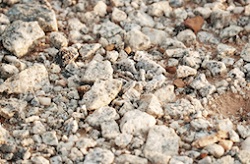One step closer to accurate earthquake predictions
Extracting oil and gas from the ground involves the use of immense amounts of water. As this water becomes highly polluted during the extraction process, it is disposed of by re-injecting it into the ground at a very high pressure. As the pressurised water makes its way through the permeable rocks and into ancient fault lines, these faults can become reactivated. Perhaps the best-documented case of this phenomenon is a recent magnitude five earthquake that happened in Oklahoma, United States. “Today, induced seismicity via increased fluid pressure can be observed worldwide, and in some cases is associated with medium to large earthquakes,” explain Marco Scuderi and Cristiano Collettini, project coordinators of the EU-funded FEAT project. Fluid overpressure has been proposed as one of the primary mechanisms that facilitate earthquake slip along tectonic faults. However, elastic dislocation theory, combined with friction law, suggests that fluid overpressure may inhibit the dynamic instabilities that result in earthquakes. “This conundrum poses a serious challenge to society’s understanding of earthquake physics, with severe implications for both natural and human-induced seismic events,” says Scuderi. According to Scuderi, this conundrum of the role of fluid pressure in induced seismicity highlights a significant knowledge gap. To help fill this gap, the FEAT project developed new experimental techniques to test existing friction laws under specific boundary conditions characteristic of induced seismicity. Two key results When it comes to our understanding of the underlying physics of earthquake nucleation, FEAT researchers achieved two key results. First, researchers simulated the conditions of induced seismicity, with wastewater being disposed of underground at high-pressure. “Here we discovered that when fluid pressure reaches a critical value, it can induce a fault to slip seismically, even if the fault has rheological properties that should favour aseismic creep,” explains Collettini. “This suggests that during injection procedures, fluid pressure should remain below a critical threshold to decrease the risk of induced earthquakes.” Second, by reproducing the full spectrum of fault slip behaviours in a laboratory – from aseismic creep to slow and regular earthquakes – researchers found that a precursory slow-down of seismic wave velocity precedes the earthquake’s stress drop. “This has important implications in understanding the processes of fault zone weakening preceding an earthquake and for the implementation of early warning systems,” adds Collettini. “In the future, technological advances will hopefully allow us to detect such signals along natural faults, and our observations imply that an earthquake can be detected right before it happens.” A glimpse of the ‘Holy Grail’ Due to the innovative nature of these experiments, project researchers had to overcome both technical and computational challenges. For example, Scuderi explains that before the experiments could even begin, researchers had to enhance an existing rock deformation apparatus with additional sensors in order to maximise the amount of information that could be processed. Even when the data was gathered, they had to develop new techniques for analysing the information being recorded. The project also enjoyed a few positive surprises. “One unexpected surprise was that, after working for a couple of months on the analysis of seismic wave velocity and developing a new approach for analysing them, we were able to find a clear and consistent precursor to failure,” says Scuderi. “Being able to forecast earthquakes is the ‘Holy Grail’ of every geophysicist, and although we are still a long way from being able to provide accurate forecasts, seeing this consistency in precursor failure for experimental faults was a significant step forward and thus very exciting.”
Keywords
FEAT, earthquakes, geophysics, induced seismicity







